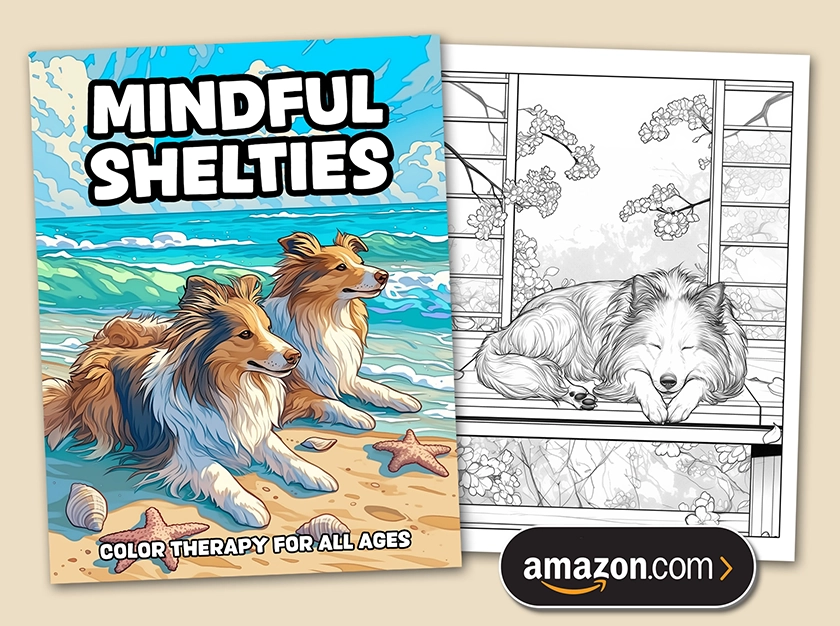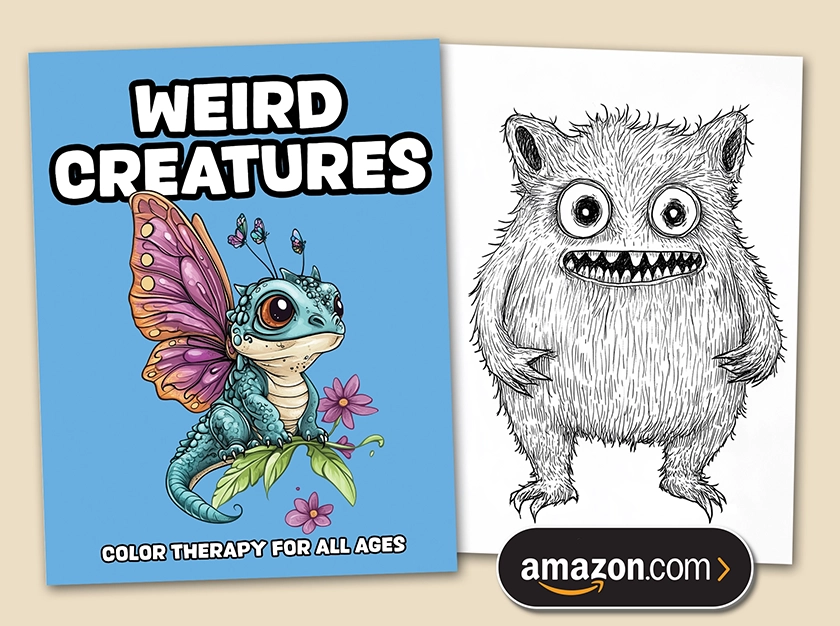Miniature Shelties (also known as Mini Shelties or Toy Shelties) are not an official dog breed recognized by the AKC. Unofficially, they're undersize Shelties, measuring anything less than 13in (33cm) at the withers.
The history of Mini Shelties is an interesting one that often divides standard Sheltie breeders and their toy breeder counterparts. Let's look at the landscape of Miniature Shelties today, the infringements made by puppy mills seeking to produce novelty pets, and how Mini Shelties compare to American and English type Shelties.
1. Mini Shelties are rare because they're an unofficial dog breed
Also known as Toy Shelties, Mini Shelties, and Miniature Shelties, these gorgeous little furballs are uncommon because they're not actually an official AKC dog breed.
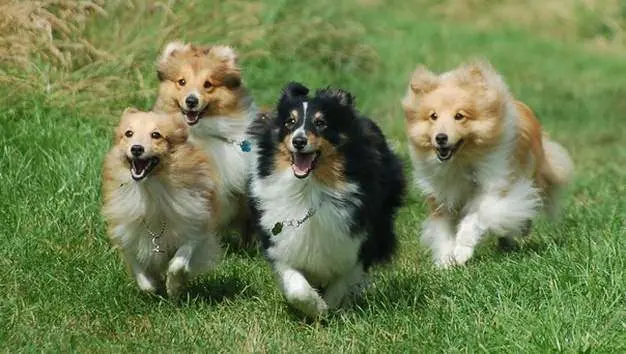
Miniature Shelties are several inches shorter than standard Shelties.
To enter into conformation shows in the US, Shetland Sheepdogs must be 13-16 inches at the withers, which is the highest part of the dogs back, just above the shoulders. Why so specific? Because dog standards give breeders an ideal form to aim for. Without strict standards on character, gait, and appearance, the Shetland Sheepdog breed we love would soon evolve into new forms.
However, Mini Sheltie breeders believe the breed was once smaller and daintier, and that downsizing brings back this original Shetland Sheepdog form. The idea is controversial, and there's definitely some heat between the two camps. Notably, aside from height, professional Mini Breeders strive for all the same features as regular Sheltie champions.
Rather than change or broaden the current standard, expert Mini Sheltie breeders want the AKC to define a new dog breed: the Toy Sheltie. There is some precedent for this, as there are multiple standards for other breeds, like the Toy, Miniature, and Standard Poodle. This is why Mini breeders continue to produce the diminutive pooch today.
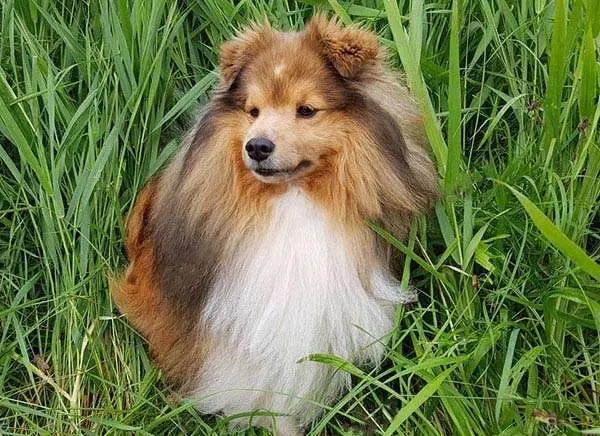
Miniature Sheltie breeders hope to see the AKC introduce a separate dog breed standard.
To date, the AKC has resisted this line of thinking, so there are very few Mini Sheltie puppies produced each year. And yet there's a high demand for Miniature Shelties within the pet trade—which leads us to the tragic and maddening existence of puppy mills.
2. Puppy mills thrive on the sale of novelty breeds like Mini Shelties
Puppy mills are commercial dog breeding facilities of considerable scale. Unlike professional breeders, who produce a limited number of puppies to create champions of beloved dog breeds, puppy mills exist for profit, churning out as many pet puppies as they can at the least expense. Also known as puppy farms, legal and illegal operators create novelty cross-breeds as pets, marketing them as Hybrids, Mixes, Miniatures, Toys, and Teacup dogs.
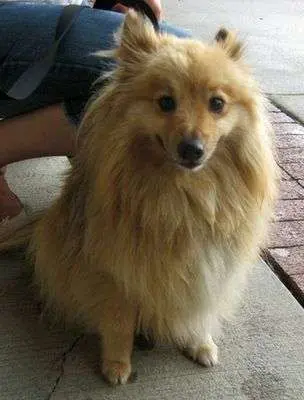
A Poshie is a Pomeranian-Sheltie Mix bred for the novelty pet trade.
When you search online for a Mini Sheltie puppy, be extremely cautious as to who you're really dealing with. Puppy mills don't advertise themselves as canine hellholes, but focus on the only selling point: cute puppies. Denial of what happens behind the scenes only rewards their inhumanity and condemns more dogs to death in future.
Why are puppy mills so bad? They don't care about animal welfare or dog breed standards, nor do they follow important health practices like genetic screening to prevent mating pairs passing inherited diseases to the next generation. Moreover, the nature of these high output breeding facilities means that many puppies suffer from infectious, physiological, and deficiency diseases.
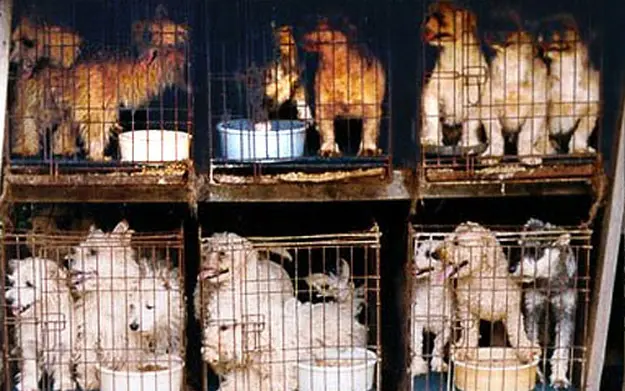
Puppy mills thrive on breeding novelty dogs like Mini Shelties, Toy Shelties, and Sheltie Mixes.
Puppy mills can have a legal or illegal status, but this doesn't make any of them humane. Of the estimated 10,000 puppy mills in the US, fewer than 3,000 are regulated by the Department of Agriculture. Breeding dogs are killed after they've exhausted their purpose, and an estimated 2 million puppies die in puppy mills each year due to illness. Specifically, puppy mills are known to:
- Keep dogs in unsanitary cages without exercise
- Breed females repeatedly before euthanizing them
- Breed unhealthy runts to create toy puppies
- Be infested with infectious diseases
- Bypass vaccinations and vet checks
- Separate puppies from mom at an early age
- Induce social and behavioral problems
- Forego genetic testing of breeding pairs
- Charge premium prices for novelty puppies
Puppy mills find buyers through anonymous online listings, using fake photos, certificates, and vet records. They're eager to ship puppies cross-country or transact in outdoor public places like car parks—anywhere but their own kennels. You'll never see where the puppy was born and raised, nor meet the parents, which is standard practice among professional dog breeders. If you run into a suspected puppy mill while searching for a Miniature Sheltie, report it to the Humane Society.
3. While they can't enter conformation, Miniature Shelties perform well in agility
In terms of temperament and behavior, Mini Shelties are much like regular Shelties. They have the same working dog history and share the same ancestral tendencies to be sensitive, intelligent, and highly trainable. They also have a strong herding instinct, and will chase anything that moves—cats, kids, and cyclists included. This is a potential behavioral issue which needs to be met head-on with obedience training.
The beauty of having a fast, smart, and dexterous little dog is he's likely to love agility training. This is a great way to have fun with your Sheltie, strengthen your bond, and benefit from exercise. Working dog breeds are particularly good in agility and most of the obstacles are adjustable in height to cater for Miniature Shelties.
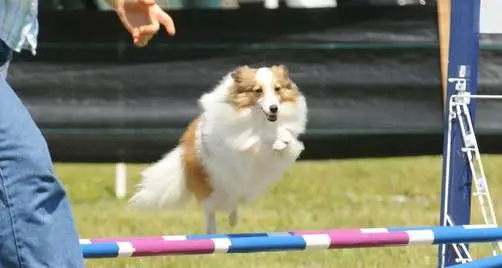
Muriel, a Miniature Sheltie in agility, by Holbrook Toy Shelties.
If you're interested in doing agility with your Sheltie, join your local agility club where you can use their equipment and learn from experienced handlers. Once you've got some practice under your belt, you can enter competitions for fun days out with other dog lovers and, of course, lots and lots of dogs. Beginners can enter informal competitions to win ribbons, while pros can enter championship events for recognition and cash prizes. See the United States Dog Agility Association for upcoming agility events.
4. Miniature Shelties have a nuanced history
I've written about the history of Shelties before, based on mainline research. However, historical narratives aren't always definitive because researchers have to rely on written records and the further back in time you go, the rarer those become. The Shetland Collie, as the Sheltie was earlier known, wasn't described officially as a breed until 1906, and the first photo didn't appear in the historic record until it was published in a book of dogs in 1915.
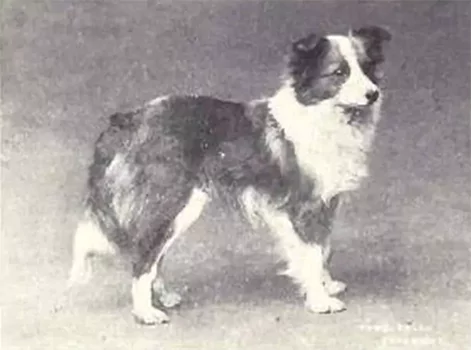
The first photo of a Sheltie (then Shetland Collie) was taken in 1915.
The fogginess of history means Miniature Sheltie breeders have a slightly different take on how Shelties evolved at the hands of Scottish farmers, focusing on the prospect of several decades of smaller incarnations. According to the Toy Sheltie Club of America, Shetland Sheepdogs originate from Scandinavian working dogs imported to the Shetland Islands of Scotland. The dogs were crossed with King Charles Spaniels or the now extinct Greenland Yakki. Successive generations decreased in size due to the hardship of life and possible inbreeding due to the small population size.
These Sheltie ancestors were small herding and companion dogs; some more Pomeranian in type, and some larger, with no formal practice of breeding to a standard. Some believe they were so small, they would be considered more like Toy Shelties today.
The rough climate of these historic dogs necessitated a thick double coat, while the rocky terrain demanded sturdiness and agility. Early Shelties were therefore adapted by introducing traits of working Collies. One thing that set them apart, however, were large ears set close together on the top of the head. The body was long and low, and by the late 19th century some Shelties could have weighed as little as 6-10 lbs.
These dogs didn't appear on the mainland until 1906, when they were shown at Cruft's Dog Show in Scotland. The breed was a sensation: fanciers soon set up The Shetland Collie Club on the Shetland Islands, and the Scotland Shetland Kennel Club on the mainland. Both drafted their own official Breed Standard which described Shetland Collies as 12 inches at the withers and weighing 10-14lbs. Notably, this is larger than the island dogs described earlier, although still smaller than the modern Shelties of America we see today. Informally, the breed became known as the Miniature Rough Collie, much as casual observers see them today ("Look Mom, a Mini Lassie!")
By 1914, the newly formed English Shetland Sheepdog Club sought to define its own Standard based on the smaller island type. It noted conflicting standards between the island club (where 12 inches was the ideal height) and the mainland club (where 12 inches was the maximum height). Miniature Sheltie breeders of today cite this as evidence of a much smaller historic Shelties and wish to see a return to these roots.
Over the next 30 years, crossing Shetland Collies with Rough Collies was common in order to maintain the desired look. However, Rough Collie breeders rather resented this, which is what ultimately prompted the name change to Shetland Sheepdogs.
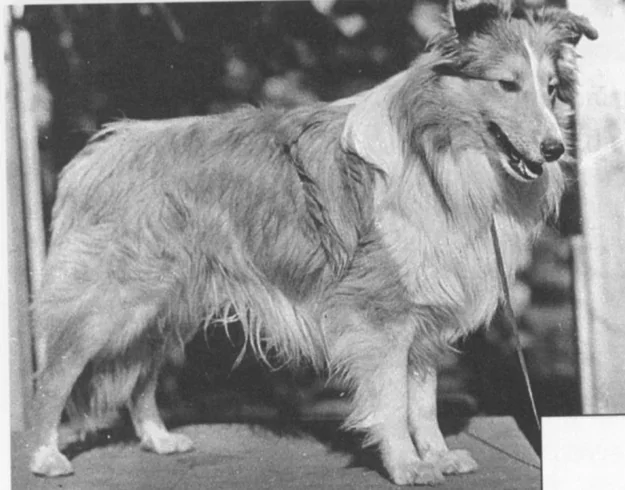
A photo of a Sheltie in 1950: Champion Geronimo Crown Prince.
In 1952, the American Kennel Club created a new standard for Shetland Sheepdogs, defining the breed as we know it today. Compared to the first standards of a 12-inch ideal/maximum, the AKC defined Shelties to be 13-16 inches, differing from the modern English standard of 14.5 inches for males and 14 inches for females.
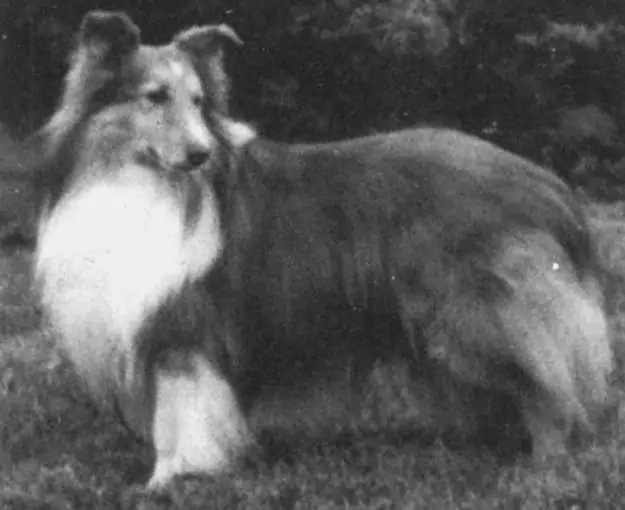
A photo of a Sheltie in 1956: Champion Kawartha's Match Maker.
Today, many pet Sheltie owners can spot the difference between an American and English Sheltie. American Shelties are larger and have a longer, flatter snout among other subtle differences. Miniature Shelties, then, are much more like their their English cousins—though still noticeably smaller.
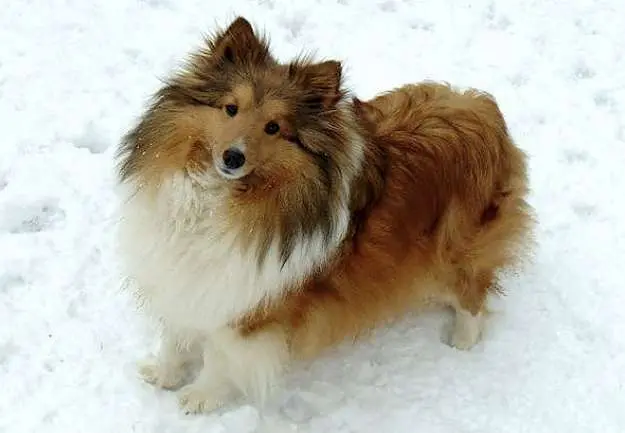
Ami, a Miniature Sheltie from K-Li's Kritters.
5. Miniature Shelties aren't called Miniature Shelties
Mini Sheltie breeders actually prefer the name Toy Shelties. I refer to them as Miniature Shelties here because that's the term people search for on Google. If you're into etymology, here are a few good reasons to call them Toy Shelties instead:
Avoiding Confusion. The Sheltie is already a miniature herding breed. So calling an even smaller version a Miniature Sheltie can be misleading, as it implies an officially recognized size variation which doesn't exist in Breed Standards set by the AKC or UKC.
Intentional Downsizing. Toy Sheltie breeders use this term to indicate they're deliberately breeding for smaller size: less than 13 inches tall and 10-15 lbs. Since many dog breeds have Toy, Miniature, and Standard variations, Toy Shelties fit the naming convention best.
Ethical Emphasis. Puppy mills have created a reputation around Miniature Shelties as being bred fron runts or crossed with smaller spitz breeds like Pomeranians. Ethical Toy Sheltie breeders make the distinction to show they're selectively breeding small yet healthy purebred Shelties with the end goal of having distinct breeding lines.
6. Miniature Shelties are a contentious issue among Sheltie breeders
As long as Toy Shelties are not an official AKC dog breed, it makes for a fiery debate between the different types of breeders. Those working toward the official Shetland Sheepdog standard generally cite three concerns:
The gene pool. The first concern is that Miniature Shelties could proliferate and pollute the overall Sheltie gene pool with undersize genes, thereby reducing the number and quality of future Sheltie champions. It's not a problem of cuteness or personal preference per se, but rather a technical issue of artificial selection that drives at the heart of dog breed standards.
To the uninitiated, breed standards sound fussy and perfectionist. But they're necessary to maintain the 190 definitive dog breeds in the world today—from Dachshunds to Dobermans, to Pomeranians to Pugs. Breeding is an art and a science. Having precise standards helps to create the breeds we love as champions and as pets.
Miniature Sheltie breeders say they have no intention of introducing undersize genes into champion Sheltie lines. But the fact that they exist raises the risk that some day, somehow, such crosses will occur.
The formality. Second, there's the argument that producing Mini Shelties has no formal basis. If there's no AKC breed standard to maintain, why maintain these lines? Overbreeding in general has led to millions of unwanted dogs in the US. When ethical dog breeders produce puppies, they do it to maintain champion lines. Inevitably, some of the offspring will never make champion status and will not be bred. Those puppies are re-homed as pets.
Mini breeders counter this with the argument that their Shelties are truer to ancestral forms of the Shetland Sheepdog. They propagate these diminutive lines in the hope the AKC will recognize a Toy Sheltie standard in future. Such a scenario then puts them in the same boat as standard Sheltie breeders as far as supplying the pet trade goes.
The novelty. The third argument relates to the puppy mill trade, which as we've seen thrives on novelty and miniature dogs. The problem of puppy mills producing thousands of Mini Shelties each year would likely be compounded if the AKC were to publish a Toy Sheltie standard.
Why? Hypothetically, formally recognizing a Toy Sheltie breed would see these dogs gain popularity in all spheres: more professional breeders would look to breed Toy Sheltie champions, and more dog lovers would look to keep them as pets. The excess demand would be met by puppy mills because they follow the money. So before we create new official dog breeds, we should consider the impact on the pet trade in its current form.
7. Mini Shelties can be found at Sheltie Rescues
If you're looking to buy a Miniature Sheltie, you must be on high alert for puppy mills, puppy farms, and backyard breeders. Look up Shelties rescues near you where there may be undersize Shelties or miniaturized crossbreeds who have escaped the puppy mill trade and are desperate for new homes.
Professional breeders may also have undersize Sheltie puppies born too small to meet the standard for breeding stock. They may well be re-homed as pets. It's also worth remembering that female Shelties are generally smaller than males, while English Shelties are daintier compared to their American counterparts.

Howard, our English Sheltie.
Mini Sheltie Breeder Listings
Below are 8 Toy Sheltie breeders listed by the Toy Sheltie Club of America. Those with an asterisk are recognized Breeders of Merit who are known to fully comply with genetic screening. During the puppy buying process, always visit the kennels first-hand for your own peace of mind.
| Breeder | Fox Point Farm* |
| Location | North Carolina |
| Website | foxpointfarm.com |
| Phone | 803-802-3888 |
| Breeder | Holbrook Toy Shelties* |
| Location | South Carolina |
| Website | holbrookhomestead.com |
| Phone | 803-807-1116 |
| Breeder | K-Li's Kritters* |
| Location | West Virginia |
| Website | cdsdesigns.wixsite.com/kliskritters |
| Phone | 304-856-1275 |
| Breeder | Ann Moore* |
| Location | Pennsylvania |
| Website | N/A |
| Phone | 570-850-1840 |
| Breeder | Puppylove Shelties |
| Location | California |
| Website | puppyloveshelties.com |
| Phone | 760-953-0604 |
| Breeder | Diamond Hill Shelties |
| Location | Maryland |
| Website | diamondhillshelties.com |
| Phone | 240-362-7464 |
| Breeder | Wildwood Shelties |
| Location | Tennessee |
| Website | N/A |
| Phone | 865-577-9286 |
| Breeder | Theresa Keiser |
| Location | Pennsylvania |
| Website | N/A |
| Phone | 610-577-6604 |
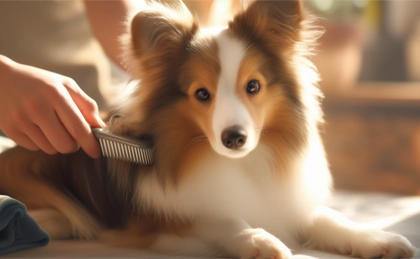
How to Groom a Sheltie
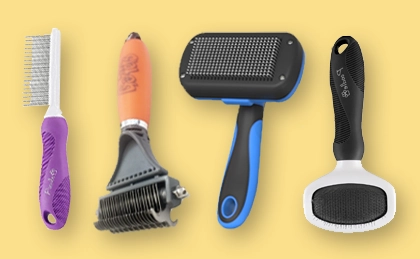
The Best Brushes for Shelties
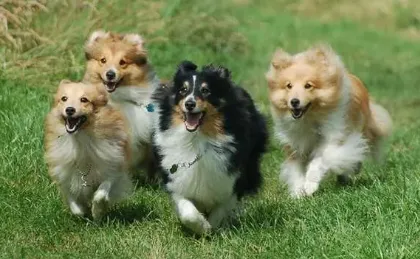
The Truth About Mini Shelties
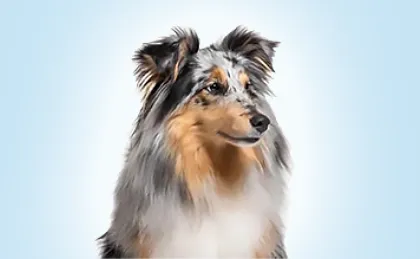
Blue Merle Shelties
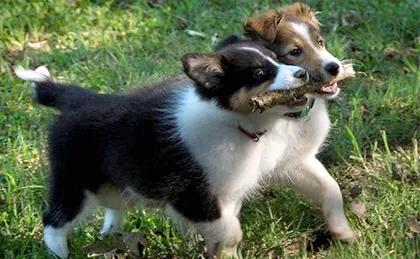
101 Cute Sheltie Puppies
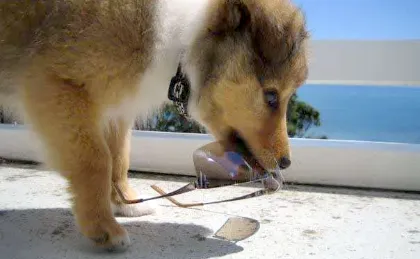
Stop Destructive Chewing
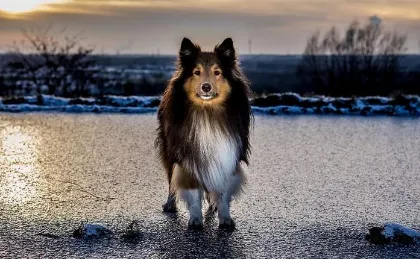
The Pros and Cons of Neutering
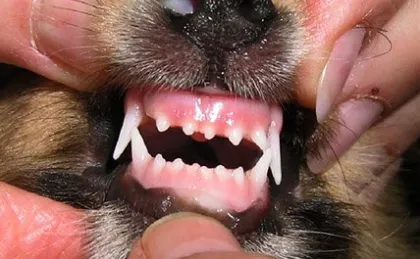
How to Clean Your Dog's Teeth
